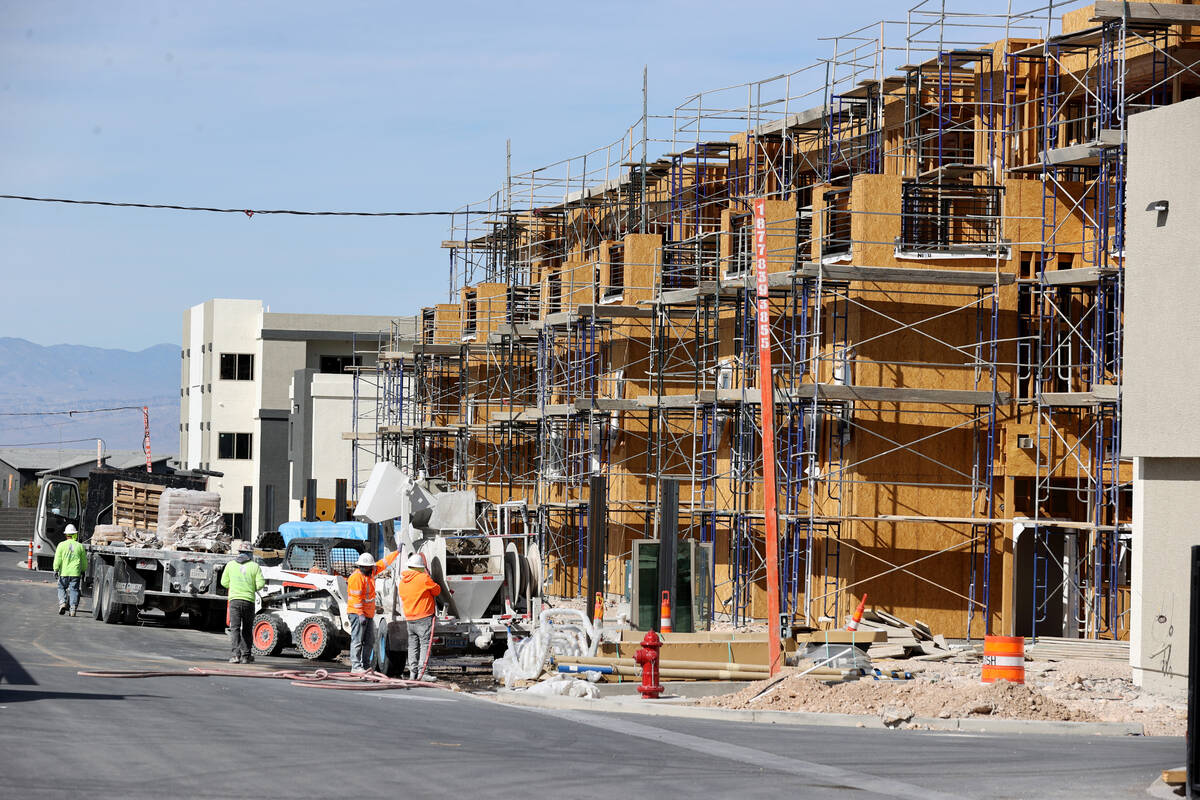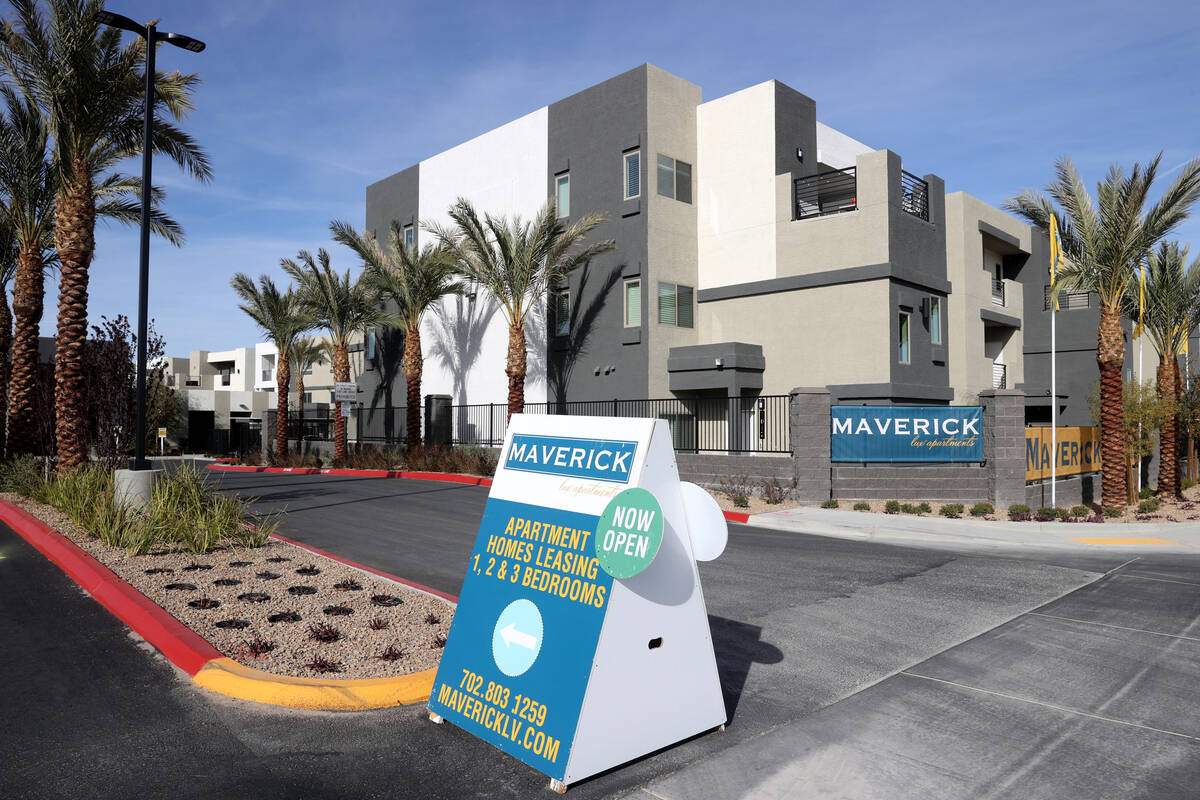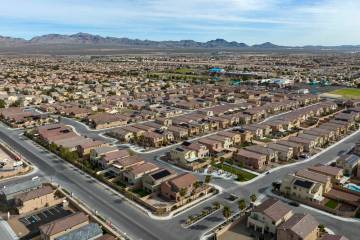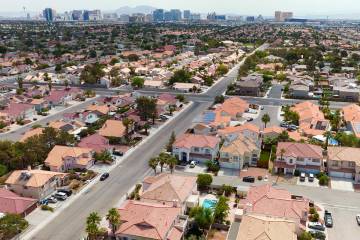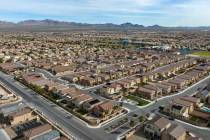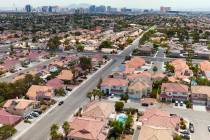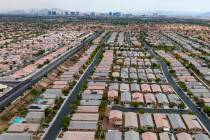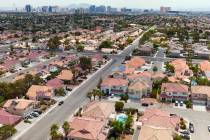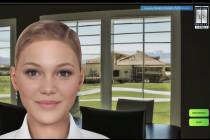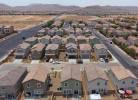‘Out-of-state interest’ in Las Vegas is dropping. And so are rents
Local rents have decreased slightly over the last year and are lower than the national average, a new report shows.
Rents across the Las Vegas Valley decreased by 2.2 percent in the first quarter of 2023 compared to the same period last year, with the average rent now $1,430 a month, according to a report from the Nevada State Apartment Association, which represents rental housing owners in Nevada.
The national average rent is $1,660, according to the report.
The rent average varies based on the size of the multifamily units. Studio units are renting for about $1,000, one-bedroom units are near $1,300, two-bedroom units are roughly over $1,500 and three-bedroom units are just over $1,800.
The report comprised data from 11 submarkets in Clark County. In the first quarter, rents were down in nine of the 11 submarkets. The rental submarket with the lowest rent was south outlying Clark County, where the average rent was $910, while the most expensive was west outlying Clark County, where the average rent was $2,357.
Following is the average rent for the Clark County submarkets in the first quarter of 2023 and the percent change from last year:
1. West outlying Clark County: $2,357, up 4 percent.
2. Enterprise/South Paradise: $1,652, down 5.3 percent.
3. Summerlin/Spring Valley: $1,592, down 4.1 percent.
4. Henderson: $1,571, down 3.7 percent.
5. Northwest Las Vegas: $1,551, down 4.6 percent.
6. North Las Vegas: $1,334, down 2 percent.
7. Paradise Valley east: $1,304, down 5 percent.
8. Las Vegas Strip: $1,163, down 0.5 percent.
9. Central Las Vegas: $1,158, down 0.1 percent.
10. North outlying Clark County: $989, up 4.8 percent.
11. South outlying Clark County: $910, down 15.9 percent.
The drop in rents in the area was attributed to new multifamily housing stock and decreasing demand for multifamily housing since the pace of people moving to Las Vegas has lessened, according to Robin Lee, the executive director of the NVSAA.
“The changes we are seeing in the Las Vegas market are due to several factors including new multifamily housing properties in development, renters transitioning to different living situations and out-of-state interest subsiding,” said Lee, in a statement. “While there will continue to be fluctuations in availability and price, it is clear that residents have plenty of options in great multifamily properties, which are vital to any community.”
The report showed there is a 9.6 percent vacancy rate for multifamily units, which is above the historical average of 7.8 percent. The vacancy rate has more than doubled since 2021 when it was 4 percent and NVSAA projects that vacancy rates could reach 11 percent by the end of 2023.
The report attributes the increased vacancy rates on tenants looking for lower rents, moving in with family or friends, relocating to more affordable markets and ongoing evictions in Las Vegas.
In the past year, there have been at least 58,500 evictions filed in Clark County, which is about 160 percent of the average during pre-pandemic years, according to data from the Eviction Lab at Princeton University. However, the Eviction lab does acknowledge its data may undercount the total amount of evictions in Clark County.
Available rental inventory should increase in Las Vegas as the NVSAA reports there are at least 26 multifamily developments in progress in Las Vegas that are projected to finish development by early 2024. With the addition of these developments, which are set to bring about 8,300 units to the Las Vegas market, the multifamily housing inventory level should increase by 4.6 percent by early 2024.
Contact Sean Hemmersmeier at shemmersmeier@reviewjournal.com. Follow @seanhemmers34 on Twitter.



